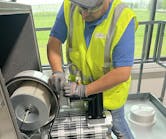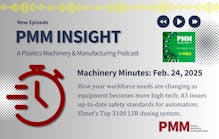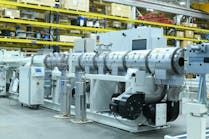Stability, flexibility, other perks offer big appeal to workers
Having trouble with retention? Bob Hersh, partner-in-charge for Grant Thornton’s New York and New England business advisory services, sums up his advice to employers this way: “If you show a sincere interest in anybody, they tend to respond, they want to respond and they want to do right by you because you're doing right by them.”
Based on the particular concerns of their own workers, companies have taken some novel approaches to cope with the labor shortage. Depending on your workers’ challenges, here are some strategies human resources experts, as well as other manufacturing leaders, recommend:
- Pay employees more regularly — even day by day.
- Consider tying pay to profitability, through bonuses or profit-sharing plans.
- Clearly set out expectations for how workers can advance. Consider tuition assistance, an hourly-to-salaried development program or apprenticeships.
- Rethink your plant’s shifts, and create flexibility for options such as part-time work. Are there days or blocks of time that could relieve workers’ commutes, or better accommodate needs such as child care? Could the work week be truncated?
- Offer child-care or elder-care support.
- Provide wellness options, like on-site clinics or employee assistance programs.
- Provide opportunities for personal or professional development. Even book clubs or classes on topics outside work — such as parenting, finances or home repair — could prove popular.
- Help workers identify affordable housing options.
- Support the local school systems.
According to surveys for a study conducted by the Manufacturing Institute (MI), in partnership with Colonial Life, from March to May 2023 for MI’s report, “The Role of Culture and Employee Engagement,” the following are among the top factors that would pull manufacturing employees away from their current job:
- a better title (96.5 percent),
- more job stability (91.8 percent),
- increased workplace flexibility (63.5 percent),
- more work-life balance (54.7 percent),
- better location (44.7 percent),
- more challenging or engaging work (51.2 percent),
- more learning and career advancement opportunities (46.2 percent).
Karen Hanna | Senior Staff Reporter
Senior Staff Reporter Karen Hanna covers injection molding, molds and tooling, processors, workforce and other topics, and writes features including In Other Words and Problem Solved for Plastics Machinery & Manufacturing, Plastics Recycling and The Journal of Blow Molding. She has more than 15 years of experience in daily and magazine journalism.
ABB appoints chief sales officer for B&R
KraussMaffei now building extruders in U.S.






